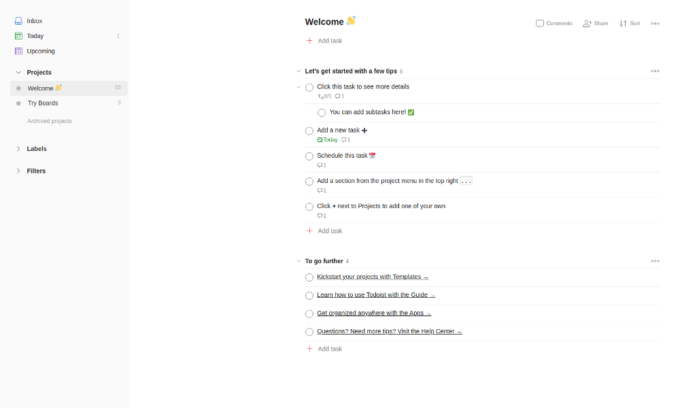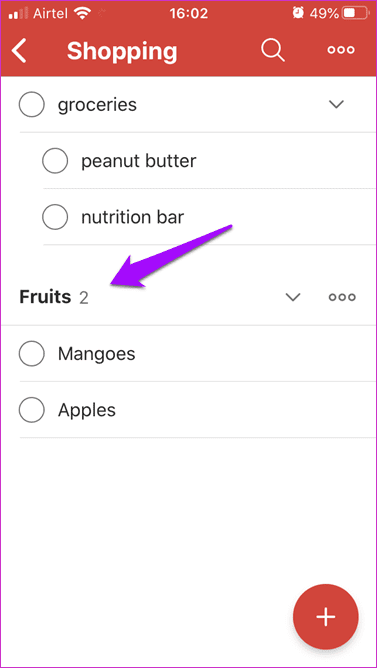
#Todoist vs reminders professional#
Todoist is more suitable for professional individuals and teams. Just Do ItĪpple Reminders is excellent for those who are deep within the Apple ecosystem and mostly work alone or with friends and family members.
#Todoist vs reminders pro#
The pro plan will cost you $3 per month per user, and team plans with admin roles will cost $5 per person per month.
#Todoist vs reminders free#
The free plan doesn’t support reminders and restricts the number of projects, team members, and labels. Then there are addons and extensions for popular browsers and even email plugins for Gmail and Outlook. Todoist offers apps for Android, iOS, Windows, macOS, and Linux. If you have iCloud on Windows, it will sync. There is a web version that you can access via iCloud. On the flip side, like all Apple apps, its only available on Apple products. Platform and PricingĪpple Reminders is entirely free to use as long as you have space in your iCloud account. Sections allow you to divide a single list into multiple sections so that you can divide tasks between them. They can then comment and share their opinion on that particular task or check it off as completed. Todoist not only allows you to share projects with others, but you can also assign individual tasks to team members. You can’t share individual tasks or subtasks or invite others that way. Open a list and tap on the three-dot icon to share it with someone else in Reminders. Reminders only has 4 priority levels, and you can’t create new ones either. Add team or family members to the mix, and managing tasks is so much easier. Labels make it easy to connect two tasks that are part of different lists or projects. You can further group tasks by priority and labels. Moving tasks around in Todoist is simpler. I wasted 10 minutes trying to figure it out. To move it back, you will have to drag the subtask over the primary. You can move a task under another to make it a subtask. Reminders support drag and drop functionality. And it was not built to scale like Todoist, which comes with admin rights and controls in the enterprise plans (more on that later). You can also share lists with Reminders, but it works with only iCloud users. It was built to scale with teams in mind. Collaboration is at the heart of Todoiost. People from your team can add, edit, and comment on the tasks. You can then attach files, notes, and people from your team or group to that task or project easily. Tap on the task inside Project to add subtasks or make changes. You can select a date, time, project, priority, and even custom label right there. Todoist also supports natural language with Siri or type. Todoist has Projects instead of lists where you can create tasks and subtasks by tapping on the big red ‘+’ icon from any screen. The next time you are messaging him/her, you will see this reminder in iMessage. One cool feature is ‘Remind me when messaging’ where you can choose a contact, if enabled. You can also divide one single task into multiple subtasks here. You can set time or location-based reminders in both Reminders and Todoist. Tap on the ‘i’ info icon anytime to add more details such as notes, links, images, and set priority levels. When you type a date or time, it will turn blue. You can create lists on the main page, but to create tasks, you will need to select a list first. Reminders support natural language, which means you can add tasks using Siri as well. Todoist comes with many themes and icons to choose from. It has a list view as opposed to Reminders’ grid view. Apart from the usual, I liked the Next 7 Days, which allows you to view your entire week in a single glance. Todoist comes with its own set of smart lists. It contains four options - Today for all tasks for the specific day, Scheduled for the future tasks, Flagged ones denoting importance, and All for the pending tasks. You can easily create a new list with a custom icon and color. The UI is more refined with four smart lists ready to add tasks.

That’s when it received a major overhaul for the better. Todoist wants to offer granular control over different aspects of lists and individual tasks.Īpple neglected Reminders until the debut of iOS 13. Apple Reminders follows Apple’s design and work policy, offering a simple, quick, and easy to use to-do app.

Which one’s for you? That’s the question most people are unable to answer. Two such apps are Apple Reminders and Todoist that we will compare. There are subtle differences that allow users to tweak different aspects of the app and make it their own. While there are several to-do list apps, I think there is an app for everyone and everything.


 0 kommentar(er)
0 kommentar(er)
